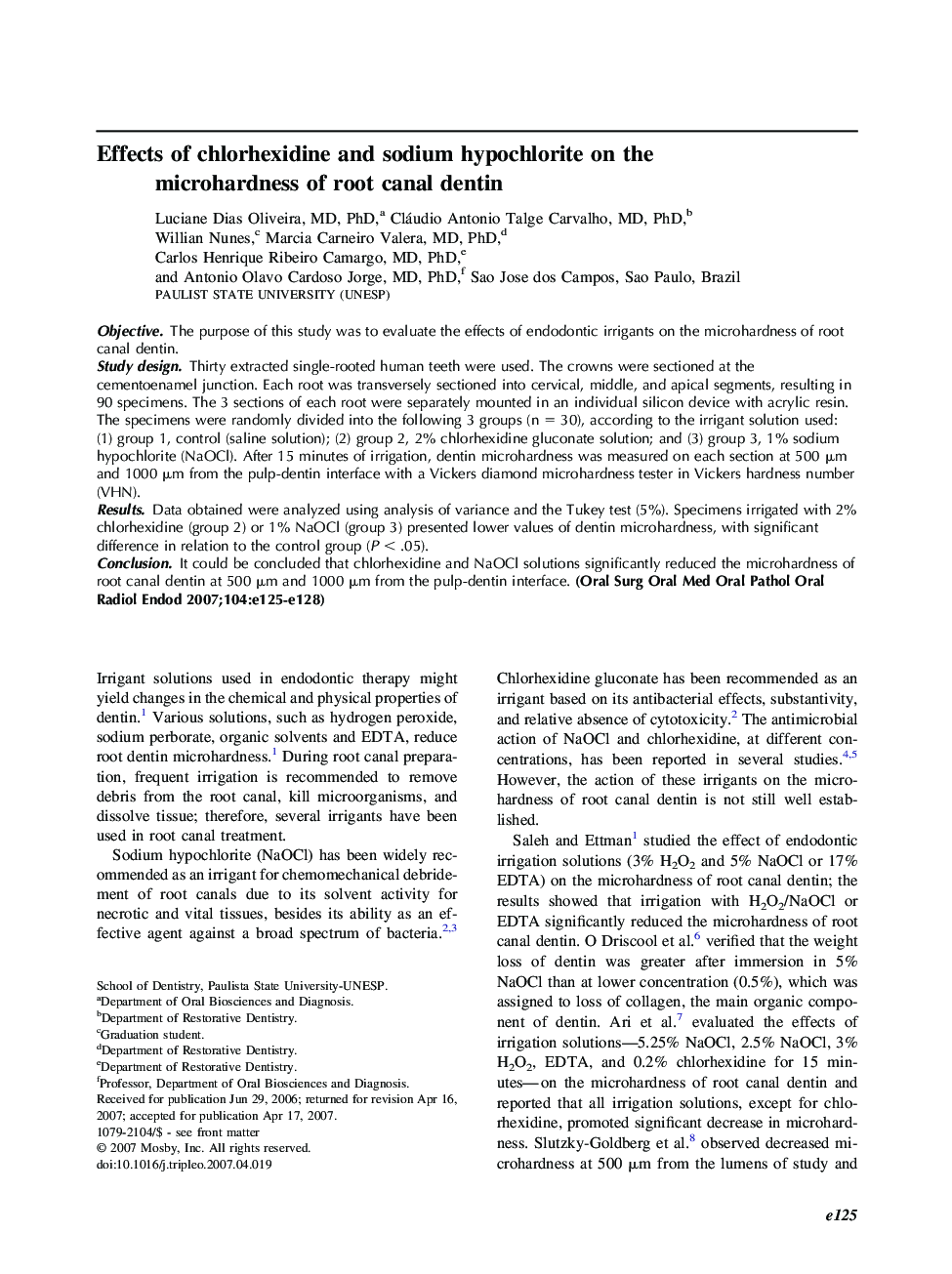| Article ID | Journal | Published Year | Pages | File Type |
|---|---|---|---|---|
| 3169321 | Oral Surgery, Oral Medicine, Oral Pathology, Oral Radiology, and Endodontology | 2007 | 4 Pages |
ObjectiveThe purpose of this study was to evaluate the effects of endodontic irrigants on the microhardness of root canal dentin.Study designThirty extracted single-rooted human teeth were used. The crowns were sectioned at the cementoenamel junction. Each root was transversely sectioned into cervical, middle, and apical segments, resulting in 90 specimens. The 3 sections of each root were separately mounted in an individual silicon device with acrylic resin. The specimens were randomly divided into the following 3 groups (n = 30), according to the irrigant solution used: (1) group 1, control (saline solution); (2) group 2, 2% chlorhexidine gluconate solution; and (3) group 3, 1% sodium hypochlorite (NaOCl). After 15 minutes of irrigation, dentin microhardness was measured on each section at 500 μm and 1000 μm from the pulp-dentin interface with a Vickers diamond microhardness tester in Vickers hardness number (VHN).ResultsData obtained were analyzed using analysis of variance and the Tukey test (5%). Specimens irrigated with 2% chlorhexidine (group 2) or 1% NaOCl (group 3) presented lower values of dentin microhardness, with significant difference in relation to the control group (P < .05).ConclusionIt could be concluded that chlorhexidine and NaOCl solutions significantly reduced the microhardness of root canal dentin at 500 μm and 1000 μm from the pulp-dentin interface.
